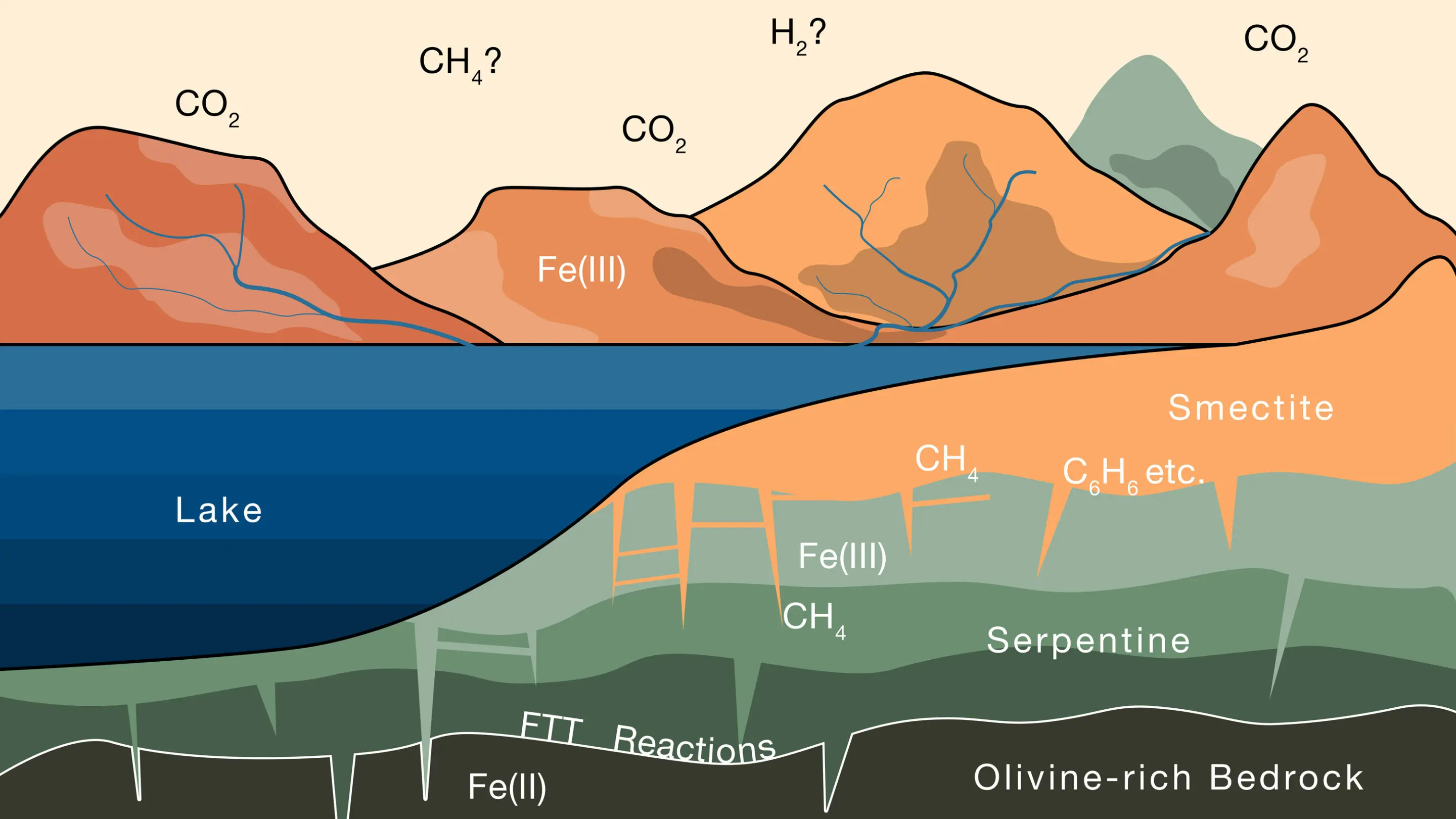Mars wasn’t always the cold desert we see today. There’s increasing evidence that water once flowed on the red planet’s surface, billions of years ago. And if there was water, there must also have been a thick atmosphere to keep that water from freezing. But sometime around 3.5 billion years ago, the water dried up, and the air, once heavy with carbon dioxide, dramatically thinned, leaving only the wisp of an atmosphere that clings to the planet today.
Where exactly did Mars’ atmosphere go? This question has been a central mystery of Mars’ 4.6-billion-year history…
The team makes the case that, while water was present on Mars, the liquid could have trickled through certain rock types and set off a slow chain of reactions that progressively drew carbon dioxide out of the atmosphere and converted it into methane—a form of carbon that could be stored for eons in the planet’s clay surface.
Similar processes occur in some regions on Earth. The researchers used their knowledge of interactions between rocks and gases on Earth and applied that to how similar processes could play out on Mars. They found that, given how much clay is estimated to cover Mars’ surface, the planet’s clay could hold up to 1.7 bar of carbon dioxide, which would be equivalent to around 80% of the planet’s initial, early atmosphere.
Source:
Olivine alteration and the loss of Mars’ early atmospheric carbon


